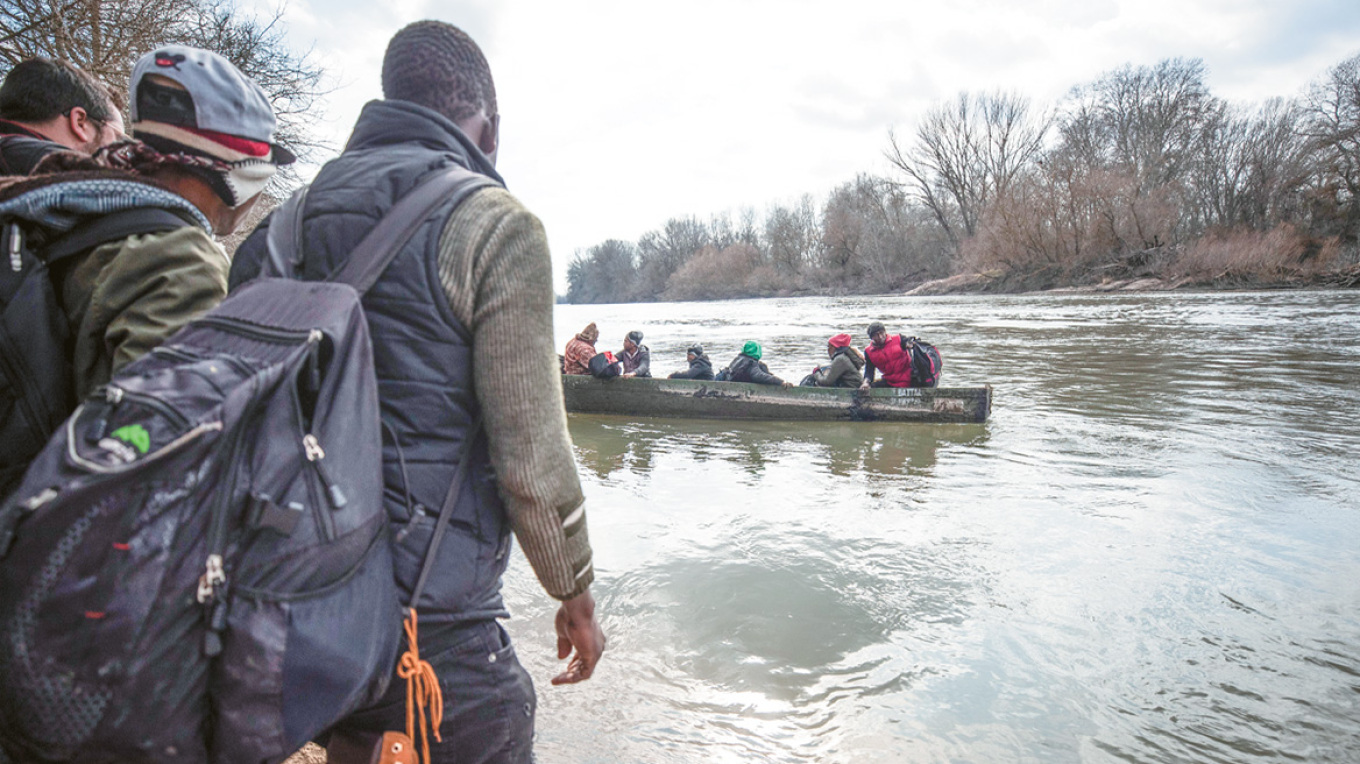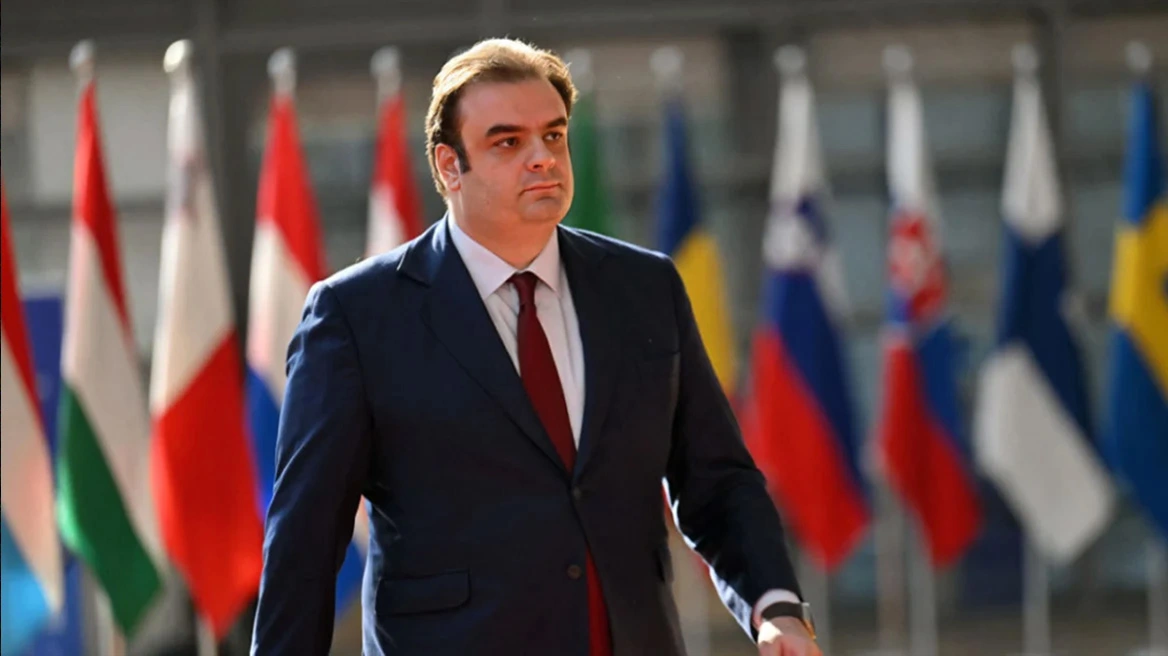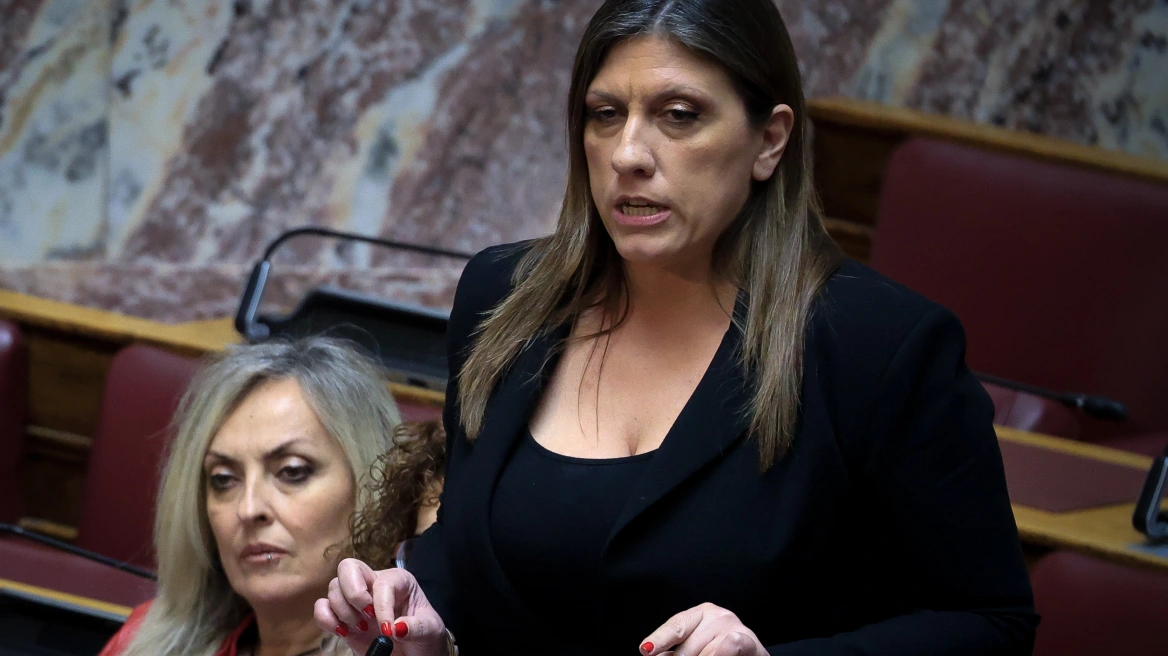Immigration flows from the Evros border into northern Greece are on the rise again, while the tragic incidents with the 20 dead migrants in Evros in recent days, as a result of the fires in the region (18 outside Avanta and 2 outside Lefkimmi), have once again brought to the fore the turmoil at the country’s borders, both land and sea, with the notably increased flows compared to the two previous years.
Especially on the Evros, smugglers on a daily basis are testing the endurance of the Greek authorities, taking advantage of the fact that the river level has dropped to very low levels due to the season.
Sources say that a common practice of smugglers is to start small fires in order to distract the authorities so that they can move undisturbed and undetected. It is also telling that the 13 migrants identified in the trailer of the self-proclaimed “militia” in the area a few days ago are facing charges of attempting to start a fire. More specifically, the 13 arrested, of Syrian and Pakistani origin, face charges of attempted arson with danger to human life, as well as manufacturing and possession of explosives and illegal entry into the country.
A new video circulated on social media showing civilians “arresting” four illegal migrants.
The tragic incident with the 18 dead migrants in the forest of Dadia, however, highlights another reality: traffickers used paths in the Evros that are often under the radar, resulting in several migrants moving like “ghosts”. The fact that the 18 unfortunate people who died tragically in the heatwave were found around a hut known in the area as a ‘traffic centre’ means that the traffickers are continuing their work as normal, taking advantage of the dense vegetation in the area.
The tension, but also the extreme incidents of recent weeks with traffickers’ cars crossing the Egnatia Odos in reverse and at breakneck speed have caused unrest in Evros, with many citizens appearing particularly concerned by the turn of events. However, the extension of the fence is proceeding normally, with the next 35 km section on the central Evros being implemented.
The cost of this extension amounts to EUR 100 million, which will come from national funds. This project is expected to be ready in the first months of 2024, after which the third and final part of the extension, amounting to approximately 140 kilometres, will take place, with a completion horizon of approximately 2026-2027.
The situation on the Evros in recent weeks, however, reflects the broader trend of increasing arrivals in our country, as recorded by the relevant ministries of Immigration and Asylum, Shipping, and Citizen Protection involved in border management. Already in the summer of 2022, compared to that of 2021, there were percentage increases in flows, but the summer of 2021 was the second summer of the coronavirus and there was a disruption in the flow of people de facto. This year, however, the situation is aggravated compared to 2022, and this can be seen in the monthly evolution of the increase, although competent sources claim that the numbers are manageable over a period of several months.
More specifically, as Thema was informed, migration flows were up in July 2023 by 60% compared to the same month in 2022, while in August it reached 80% compared to August 2022, without the month being closed yet. The increase is seen on the Evros land route, but also on the islands, with Lesvos being the island that sees the greatest burden comparatively during this period, although the structures in place still have significant room for improvement.
According to a competent source, at the moment there are about 20,000 asylum seekers in the closed structures of the Ministry of Immigration and Asylum against a capacity of 38,000. Indicative is the fact that in June – i.e. before the peak of the flows in the summer months – 1,301 arrivals were recorded at the Fylaki CAC on Evros, compared to 486 in June last year, i.e. almost three times as many. The number of arrests at the Evros border is also indicative: from 157 in April, they rose to 381 in May, followed by an explosion in June with 1,099 arrests. July and August continue with high numbers, 527 and 692 arrests respectively.
However, given that each month there are around 2,000 ‘exits’ from the system, the numbers become somewhat more manageable, but, as a competent source puts it, ‘if last year we had 3,000 arrivals in a month, this year we have 5,000’. It is obvious that a continuation of flows at these levels will test the strength of the system over a 3-4 month period, but it is estimated that from October onwards, given the weather conditions, the data will vary.
The increase in migratory flows and the pressure on the borders have of course been observed for some time and the government put the issue on the agenda at the regular meeting of the Council of Ministers held on 2 August, when the emerging data and trends were presented.
Indicative of the situation is the Coast Guard’s figures on what is happening at sea, where patrols remain particularly high, but it is clear that the Turkish Coast Guard is not holding back boats at the same rate as it did in the previous period. In the 8 months to August 20, 2023, compared to the same period in 2022, coastguards recorded 78 versus 26 incidents, made 2,373 rescues versus 1,174 last year, and arrested 136 traffickers versus 112 last year. In simple mathematics, therefore, incidents have almost tripled, while rescues have more than doubled and the Coast Guard’s incident report is full almost on a daily basis.
Shipwrecks in Samos and off Lesvos – Five migrants dead
Two shipwrecks with dead migrants occurred off Lesvos and Samos on Monday morning.
As ERT reported on the case of Lesvos, the vessel was spotted 3 nautical miles inside Turkish territorial waters. The Turkish authorities were called for a rescue but did not respond.
The Coast Guard was mobilised for the wreck, which rescued 22 people and recovered four bodies. All those rescued have been transferred to Mytilene.
For the Samos shipwreck, the Coast Guard rescued 37 people, of which one was dead.
The unrest in the Sahel region in Africa seems to have played a role in the rise in immigration flows, with a number of Africans crossing into Turkey on direct flights and from there attempting to cross into European territory.
Furthermore, despite the better climate in Greek-Turkish relations and the channels of communication that exist and are active between the two governments, the Turks have once again “relaxed the spigot”, not with the intention of instrumentalising the migration issue, but obviously turning a blind eye in order to ease the burden they consider their country has borne all these years, even though they have received generous European funding for both housing and integration of refugees.
Euro-Consensus
The situation that is taking shape is undoubtedly worrying the Greek government, which does not want to see a new explosion in illegal migration, but on the other hand does not want to be in open breach with the EU either, at least for as long as the current Commission remains in office until autumn 2024. It is no secret that the shipwreck off Pylos, which took place between the two elections under the caretaker government, has traumatised Greece’s image in the European institutions, with the new Minister of Immigration and Asylum Dimitris Kairidis having indulged in an effort to restore the image of Greece that had taken shape in recent weeks since he took over the portfolio.
Ask me anything
Explore related questions





